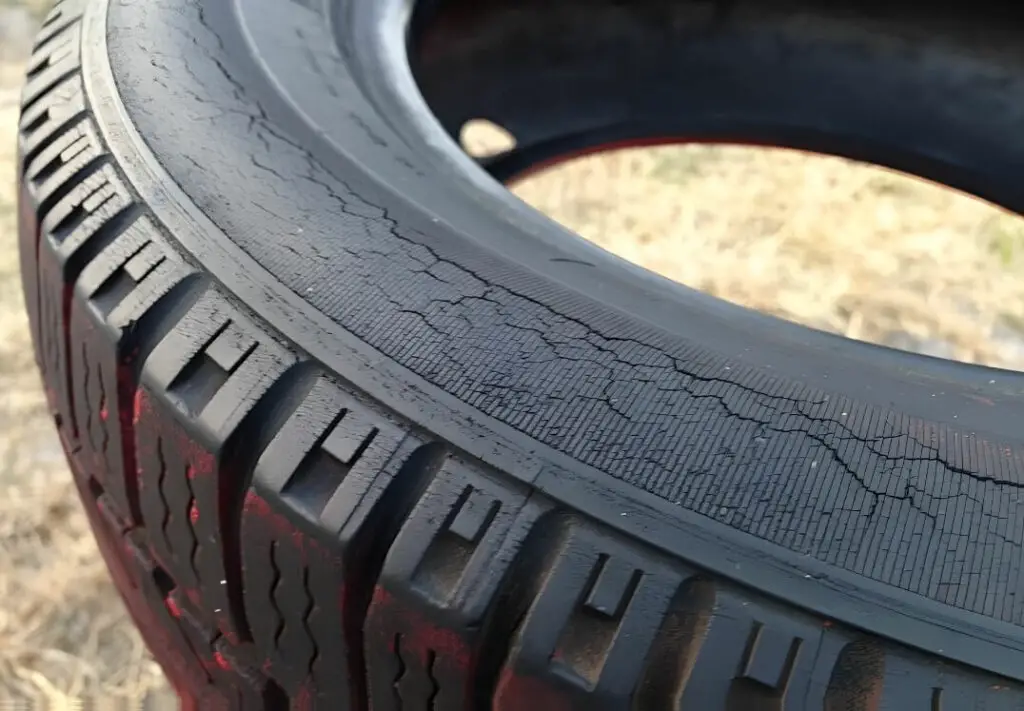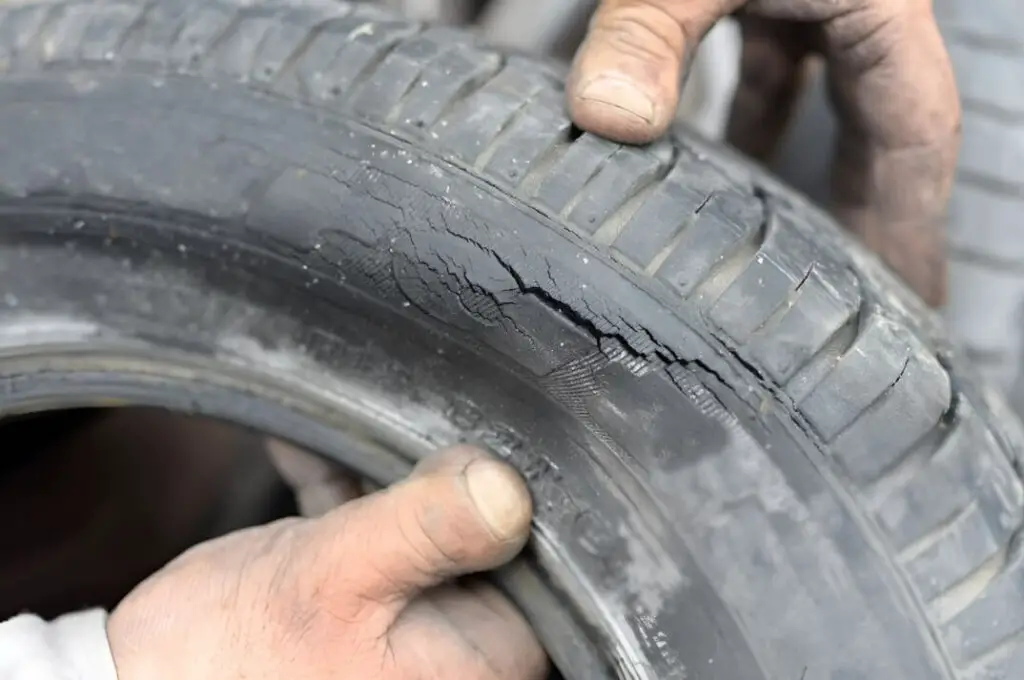Curious about how to prevent dry rot on tires? You’re in the right place. This short guide is packed with practical tips to help keep your tires in top shape. You’ll learn about dry rot, its impact, and most importantly, how to prevent it. Keep reading for some tire-preserving wisdom!
Dry rot on tires is a common issue faced by car owners. This article gives useful tips on preventing it. Follow these guidelines to keep your tires safe and in good condition!
Tire maintenance is crucial to avoid dry rot. Make sure to inspect tires regularly for any cracks or dryness. Proper inflation is essential, as too little air pressure can cause heat buildup, resulting in dry rot. Also, store your vehicle in a cool, dry place.
In addition, direct sunlight can damage tire rubber over time. To prevent this, park your car in the shade or use protective covers.

Using tire dressings or protectants can protect against dry rot. These products have UV blockers and conditioners, but be sure to use high-quality ones.
A friend of mine didn’t take proper care of his car’s tires while it was parked for a long time. When he returned, he saw the tires had dry rot. This incident taught me the importance of tire maintenance and taking preventive measures. Good tire care means better performance and safety on the road.
What is Dry Rot on Tires?
Dry rot on tires is a major problem that can hurt both safety and performance. It involves the deterioration of rubber due to exposure to the elements, such as cracking, splitting, and overall weakness. This leads to decreased traction, reduced handling, and even blowouts while driving.
To avoid dry rot, understanding its causes and taking action is key.
- Direct sunlight and UV rays speed up rubber degradation. Shielding your tires with parking in shaded areas or using covers is wise.
- Severe temperatures can also bring on dry rot. Heat makes rubber hard and brittle, while freezing temperatures make it more fragile. Examining tires for signs of damage and keeping them inflated helps.
Plus, proper tire maintenance is essential in preventing dry rot. Cleaning and applying a suitable tire dressing boosts their looks and protects against cracking.
In addition, avoiding long periods of inactivity is beneficial. When a car remains idle, the weight compresses the rubber against the ground, leaving it vulnerable to dry rot. So, drive or rotate the tires regularly.
A fact: 85% of all tire failures occur from tread or sidewall separation, from dry rot, according to a Carleton University study.
Causes of Dry Rot on Tires
Dry rot on tires? It’s a hazardous consequence of multiple causes. Knowing them can help us keep tires safe to drive.
- Incorrect Tire Inflation: A major factor is not having the right pressure. Too high or too low stress on rubber leads to cracks and dry rot.
- Sunlight: Sunrays’ UV rays can also play a part. Prolonged exposure weakens the rubber, making it easier to crack.
- Aged Tires: As they age, tires become more open to dry rot. Especially those not regularly used or kept up with.
- Bad Storage: High humidity or extreme temperatures can accelerate dry rot. Moisture and heat damage the rubber and up the risk.
To note, higher-quality tires with better rubber tend to be more resistant. Regular inspections and maintenance are critical to detect early signs.
Fun Fact: NHTSA’s study shows 9% of car accidents stem from tire issues like blowouts and tread separations.
Signs and Symptoms of Dry Rot
Dry rot on tires can be dangerous. So, look out for signs and symptoms! Cracks, fading and discoloration, a brittle texture, and bulges and blisters are all things to look for. Tire age and exposure to elements like sunlight, heat, and ozone speed up the process. Regularly inspect tires to keep safe.

My friend Mark had an accident due to dry rot. He bought used tires, but didn’t check them. He was lucky, but it was a wake-up call. Be alert. Be safe. Identify dry rot signs for secure tires and safe roads.
Importance of Preventing Dry Rot
Preventing dry rot on tires is a must. It guarantees long life, protects tire integrity, and reduces the danger of accidents. Ignoring this can mean increased tire wear, decreased traction, and even a blowout.
When tires are not safeguarded from dry rot, their rubber breaks down due to oxidation or ozone. This weakens the tire structure, making it prone to cracking and decay.
To ward off dry rot, store tires in a cool, dry place, away from direct sunlight. Clean and treat them with a quality tire conditioner to keep them flexible and prevent dryness. Also, check tire pressure regularly and rotate tires every few months for even wear and longer life.
It’s interesting to know that tire makers started adding antioxidants to tire compounds in the 1920s to combat dry rot. This immensely improved tire durability and reduced premature aging. Since then, technology has advanced these protective measures.
Must check: What Causes Tire Cupping and How Can it Be Prevented?
How to Prevent Dry Rot on Tires in 4 Simple Steps
Dry rot on tires can be a real problem that affects their performance and life. To avoid it, here are the steps:
- Cleaning – Wash tires with mild soap and water. This takes away dirt and debris that can lead to dry rot.
- Storage – Store tires in a cool, dry place, away from sunlight and extreme temperatures. This prevents rubber from deteriorating and getting dry rot.
- Tire rotation – Rotate tires often to make sure there’s even wear. This stops any tire from having too much weight for too long. This reduces the risk of dry rot.
- Tire checks – Look at tires for signs of dry rot, like cracks or bulges. If you see something, replace the tire right away.
Also, proper tire maintenance is not only about preventing dry rot. It’s also about safety and fuel efficiency.
My friend was a great example of why you should take tire care seriously. He went months without doing anything for his tires, then had a blowout on the highway! After inspection, it was dry rot that caused it. That event made him realize how important tire maintenance is for safety.

Tire maintenance is not merely about stopping dry rot. It’s also about keeping yourself safe while driving.
Wrapping Up: How to Keep Tires Free from Dry Rotting
Understanding how to prevent dry rot on tires is essential for every car owner. It starts with recognizing the early signs of dry rot tires. Dry rotting often results from prolonged exposure to harmful elements, including UV rays and ozone. Regularly inspecting your tires and being vigilant about maintenance can effectively combat this menace.
The best way to prevent dry rot on tires without spending a lot of money involves routinely inspecting for signs of dry rotted tires. Ensure proper inflation, shield tires from excessive UV exposure, and use the best tire dressing to prevent dry rot. Regular cleaning with soap and water can also help prevent dry rot. Parking vehicles off-ground occasionally can relieve tire stress.
Furthermore, understanding how to keep tires from dry rotting ensures longevity. Opting for the best way to prevent dry rot on tires is a proactive step. Consider tire dressings; however, be selective. Not all are effective, so research the best tire dressing to prevent dry rot.
For those on a budget, rest assured: You can halt tire dry rot without breaking the bank. In essence, to how to stop tires from dry rotting, stay vigilant, proactive, and informed. Your tires, after all, ensure your safe journey.
Must check: How Long Can You Drive on Tires with Wire Showing? The Risk Revealed
FAQs on How to Prevent Dry Rot on Tires:
With the increasing concern over tire dry rot, many car owners are searching for ways to address this problem. This guide answers common queries on how to stop dry rot on tires, recognizing signs of dry rotted tires, and the best tire dressing to prevent dry rot. Additionally, learn how to keep tires from dry rotting and preventive measures to ensure your car’s tires remain in prime condition.
FAQ 1: What causes dry rot on tires?
Dry rot on tires is caused by a combination of factors including exposure to sunlight, heat, and ozone. It can also be accelerated by factors such as low tire pressure, improper storage, and infrequent use of the vehicle.
FAQ 2: How can I prevent dry rot on tires?
To prevent dry rot on tires, it is important to keep them properly inflated to the recommended pressure and avoid over-inflation. Store tires in a cool and dry location away from direct sunlight. Regularly inspect tires for any signs of cracking or dryness and replace them if necessary.
FAQ 3: Can applying tire dressing help prevent dry rot?
Yes, applying a tire dressing can help prevent dry rot by providing a protective layer against UV rays and ozone damage. Make sure to choose a tire dressing that is specifically formulated for UV protection and follow the application instructions carefully.
FAQ 4: How often should I inspect my tires for dry rot?
It is recommended to inspect your tires for dry rot at least once every month. Check for cracks or signs of dryness on the sidewalls and between the treads. If you notice any damage, consult a professional tire technician for further evaluation.
FAQ 5: Can driving on underinflated tires contribute to dry rot?
Yes, driving on underinflated tires can lead to dry rot. Low tire pressure causes excessive tire flexing, which can accelerate the aging process and increase the risk of dry rot. Be sure to regularly check and maintain proper tire pressure to reduce the chances of dry rot.
FAQ 6: Are there any specific tire care products that can help prevent dry rot?
Yes, there are tire care products available in the market that can help prevent dry rot. These products typically contain UV inhibitors and protectants to shield the tires from harmful elements. Look for products specifically labeled for their anti-dry rot properties and follow the instructions provided.
Don’t miss out on these related topics: